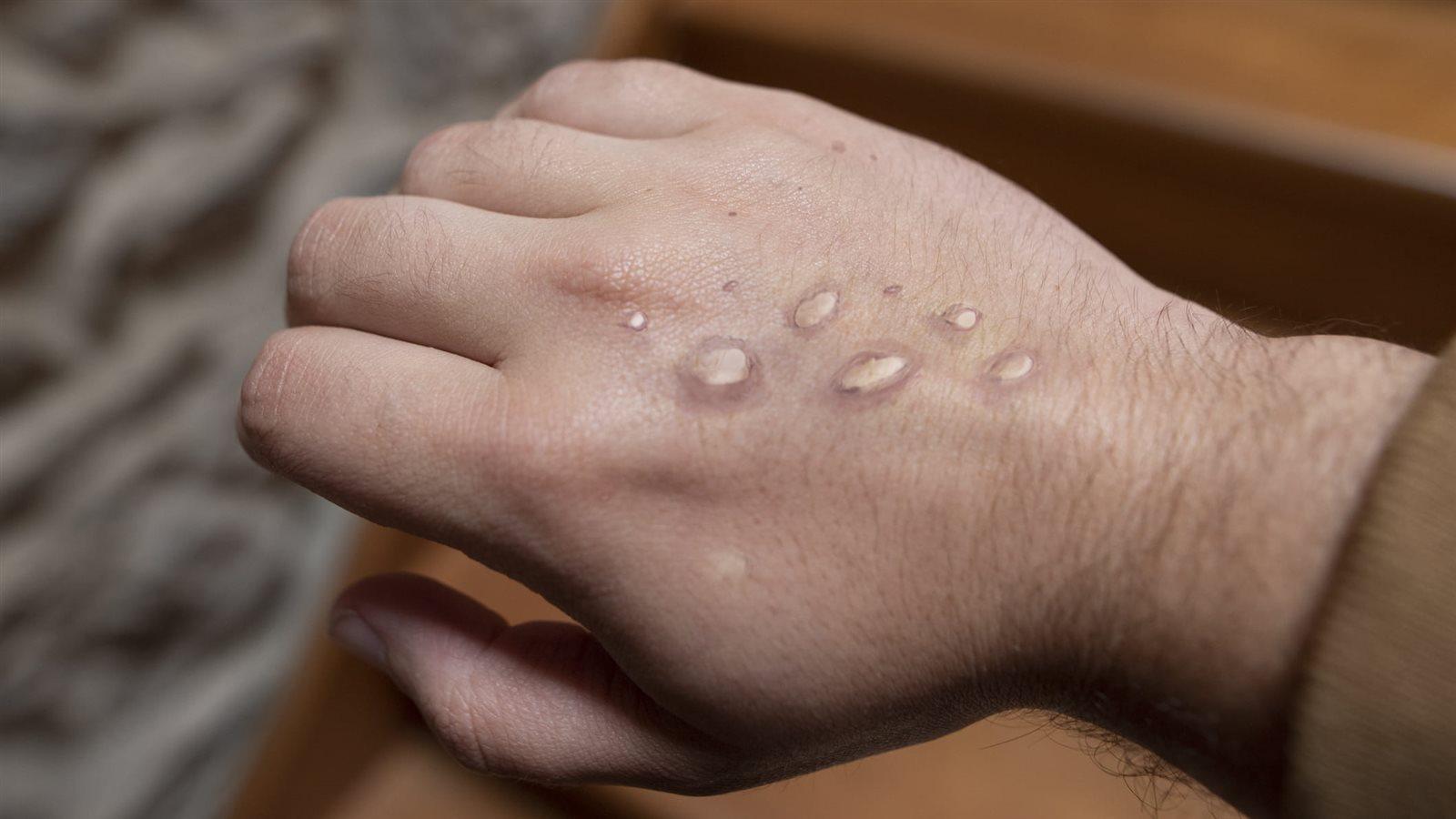What You Need to Know About Monkeypox

Blister-like rash caused by monkeypox.
Monkeypox, a virus that creates a rash that can be extremely painful and causes flu-like symptoms, was designated a global public health emergency by the World Health Organization on July 23. As of July 27, 95 cases had been confirmed in Pennsylvania, 89 in New Jersey, three in Delaware and 900 in New York. The actual number of cases is likely significantly higher.
Drexel experts offered insights that are cause for both concern and relief, given the rapid spread of this virus and the medical community’s increasing familiarity with it. We spoke with physicians Amy Althoff, associate professor of medicine in the Division of Infectious Diseases & HIV Medicine at Drexel’s College of Medicine and medical director of the Partnership Comprehensive Care Practice and Marla Gold, chief wellness officer and senior vice provost for community health.
“This is quite concerning and it’s something to be aware of,” Althoff said. “We’re seeing many more cases every day. The number of confirmed cases likely represents an underestimate and will continue to climb.”
Here are answers to some key questions:
Q: What is monkeypox?
A: According to the CDC, monkeypox virus is part of the Orthopox family of viruses along with smallpox and vaccinia. While generally less severe and much less contagious than smallpox, monkeypox can be a serious illness. Monkeypox is rarely fatal. Monkeypox is not related to chickenpox.
Q: Should I be concerned?
A: The virus is spreading rapidly and undoubtedly will affect members of the University community, so concern is warranted. However, it’s important to note that the monkeypox virus does not spread through casual contact and is easier to contain than the airborne COVID-19 virus. Additionally, the medical community has tools for testing, treating and vaccinating monkeypox that were lacking when the coronavirus emerged. That said, we must act rapidly to contain the spread of this viral infection to prevent it from becoming endemic to the U.S.
Q: What are the symptoms and how long do they last?
A: Once infected, a person may be asymptomatic for one to two weeks, during which the virus is believed by health experts not to be contagious to others. Fever and flu-like symptoms may precede or follow the appearance of a blister-like rash that goes through different stages and is sometimes very painful. The rash could appear as one isolated lesion, or it can cover numerous parts of the body including the mouth, face, hands and genital region. Depending on where it appears, it can cause complications. It can take one to four weeks for the blisters to heal and new skin to form. The rash can be extremely painful for some people. A person is infectious to others from the onset of symptoms until all lesions have crusted over and new skin has formed.
Q: How does it spread?
A: Anyone can get monkeypox after having close physical contact with someone who has the infection, especially contact with sores, bodily fluids, or other contaminated surfaces. Most often, it spreads through intimate skin-to-skin contact, including during sex, as well as activities like kissing. It can also be spread by respiratory secretions (talking, coughing, sneezing, breathing) during prolonged, close, face-to-face contact. Monkeypox can spread through touching materials used by a person with monkeypox that haven’t been cleaned, such as towels and bedding. Although the monkeypox virus has been found in semen, it is not yet considered a sexually transmitted disease. More data is needed. Monkeypox is not spread through casual conversations or walking by someone with monkeypox. Skin-to-skin, intimate contact remains the most common mode of viral transmission at this time.
Q: Who is at risk?
A: Although the 2022 monkeypox outbreak has affected gay, bisexual, transgender, non-binary, and other men who have sex with men, anyone can become infected. People of any sexual orientation or gender identity can get monkeypox. Viruses do not have eyes, and monkeypox is not a “gay disease!”
Infectious diseases are always able to spread more quickly in smaller social networks than larger ones. The global monkeypox outbreak appears to have initially impacted the tightly-knit social network of gay and bisexual cis men.
Q: Are treatments available?
A: In most cases, the disease will self-resolve in several weeks and not require treatment. However, an antiviral medication, Tecovirimat (also known as TPOXX), is available for those who require treatment. TPOXX is being offered as part of a clinical trial, which typically requires extensive monitoring and lab work. Given the fact that the benefits outweigh the risks, those barriers are being decreased as much as possible through expanded access. In addition, doctors can prescribe treatment for pain that a patient may experience from the rash.
The Drexel Student Health Center can obtain TPOXX for severe cases that warrant treatment.
Q: Is vaccination available?
A: Currently, the vaccine JYNNEOS is only available on a very limited basis to those who have been exposed and are considered at high risk. While the CDC is working to quickly expand availability of the vaccine, only those over age 18 in specific populations: gay, bi-sexual, or nonbinary men who have sex with men, a person who has multiple or anonymous sex partners in the last 14 days, is immunocompromised (as defined by the CDC) or someone who thinks they have been exposed to monkeypox are eligible at this time.
Should the vaccine become more available, the Drexel Student Health Service will work with the city to obtain it.
Q: What should I do if I think I've been exposed?
- People who are at high risk or may have been exposed should call the Philadelphia Health Department’s Call Center at 215-685-5488. The call takers will review eligibility and set a vaccine appointment, if you are found to be eligible. It’s important to get the vaccine within the first four days of exposure, if possible, but at most within 14 days of exposure. The sooner you get it, the lower the likelihood of developing monkeypox or developing severe symptoms.
- If you have a lesion or rash, get tested. The Drexel Student Health Center and most primary care providers are equipped to conduct testing, which consists of swabbing several lesions. While awaiting test results – which typically takes two to three days – you need to isolate. Drexel is in the process of designating space to accommodate students who need to isolate while waiting for test results as well as for those diagnosed with monkeypox.
It’s not a question of if, but when, the outbreak will affect the University community, Gold said.
“We anticipate seeing cases among students and have already begun testing,” Gold said. “It’s in Philadelphia and the region. We’re ready for it. We want members of the Drexel community to be educated about this virus, how it is transmitted and when to seek care. We will be reaching out to campus student groups and asking for their help in getting the word out about Monkeypox.”
At the same time, she added, it is still possible to slow and even stop the spread of the virus, if everyone remains alert and follows recommended guidance, and the CDC expands testing, vaccine availability and public education.
For more information about monkeypox: https://www.cdc.gov/poxvirus/monkeypox/index.html
Drexel News is produced by
University Marketing and Communications.

